
The UPS Equivalent Of “The Dog Ate My Homework”


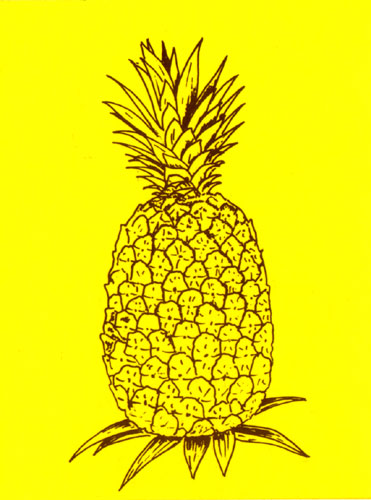
These decals were placed on Maui Pineapple Co. vehicles in the 1960s to identify them for entry into the pineapple cannery complex. The decal color was changed to orange in 1970.
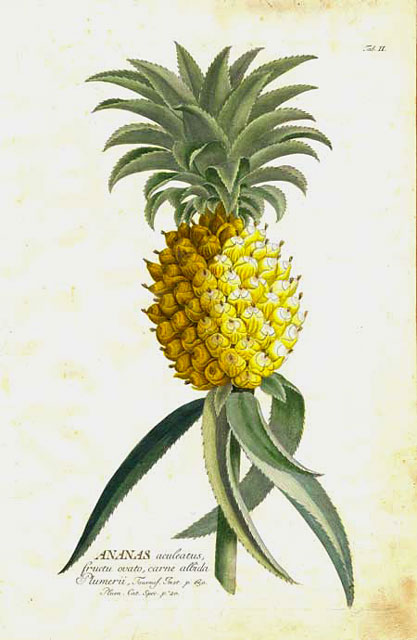
This plate is from Christopher Jacob Trew’s Plantae Selectae (Nuremberg, 1750-73), which was illustrated by Georg Dionysius Ehret.
“Georg Ehret was one of the finest flower painters in 18th century Europe, and his work still stands as a preeminent accomplishment of European botanical art. Born in Heidelburg to a market gardener, Ehret began his working life as a gardener’s apprentice, eventually becoming a chief gardener for the Elector of Heidelburg and the Margrave of Baden, whose prize tulips and hyacinths he painted.
“Ehret soon moved on to a number of cities across Europe, collecting eminent friends and important patrons as he traveled. Ehret’s list of benefactors includes the most brilliant and generous amateurs of his day, among whom was Dr. Christoph Trew, a wealthy Nuremburg physician who became his lifelong patron, friend and collaborator. Ehret also gained the admiration of Bernard de Jussieu in Paris, and the great Swedish naturalist Linnaeus. In England, where he eventually settled, Ehret became the only foreigner to be elected a Fellow of the Royal Society.
“The Plantae Selectae was the culmination of many years’ collaboration between Ehret and Trew. The 100 illustrations were selected for their exotic appeal and botanical interest. Many tropical subjects had only recently been introduced to Europe and were still unknown to the general public. Jacob and Haig translated Ehret’s beautiful, accurate and remarkably sensuous watercolor studies into remarkably faithful hand-colored engravings. Plantae Selectae is certainly one of the most exquisite and dramatic of the great botanical works.”
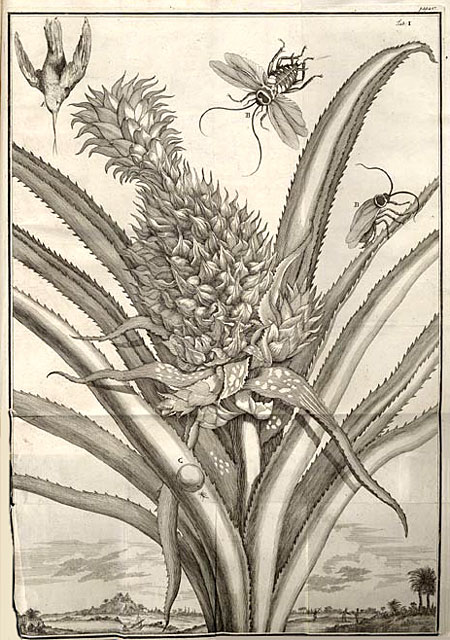
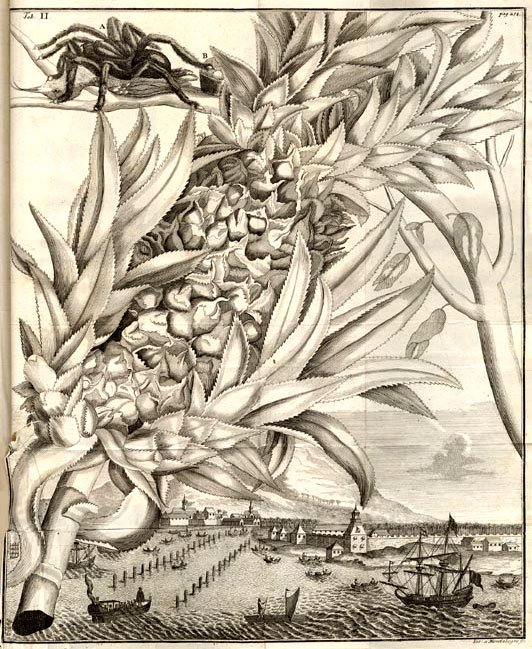
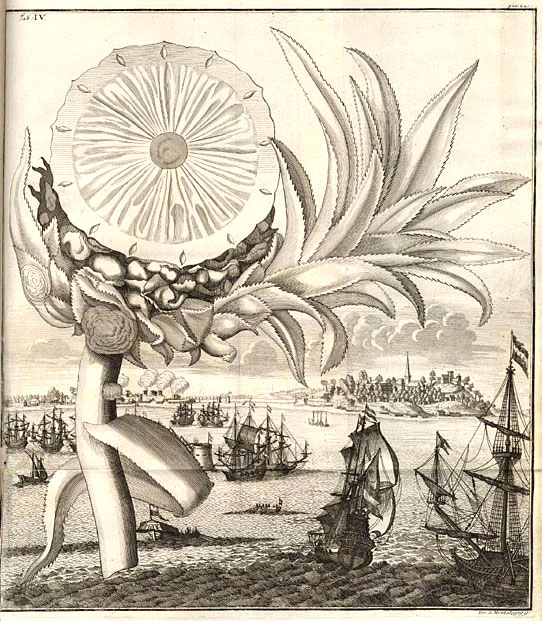
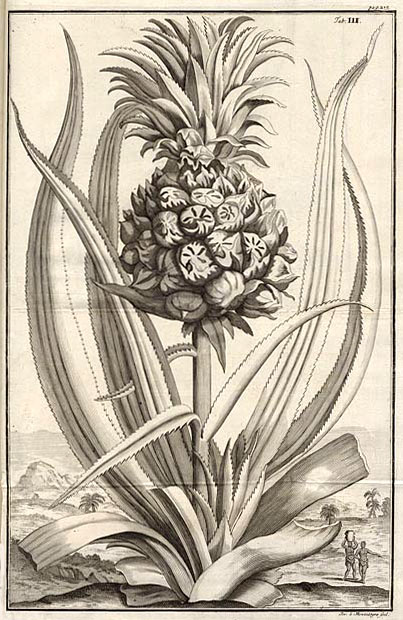
Continuation der Nürnbergischen Hesperidum
by Johann Christoph Volkamer“…Astonishingly beautiful illustrations of citrus fruits, flowers, exotic plants, landscapes, cities, villages, palaces, gardens and garden art (including sundials and an obelisk with Egyptian heiroglyphs), as well as garden, building and city plans, labyrinths, etc. Most of the plates show a large illustration of a fruit (or less often a flower) above a small view of the garden, village, city or region where it is found, resulting in frequently surreal effects reminiscent of Roald Dahl’s James and the Giant Peach. Many include people engaged in various activities, and some of the botanical illustrations also include insects, spiders, birds, etc., including pests that damage the fruits: ‘delightful views of the gardens and palaces of Germany, Austria and Italy’ (Blunt); ‘engraving as fine as this is not really improved by colour’ (Raphael); ‘the vignettes and tailpieces…are so attractive that they have often been borrowed to decorate later books’ (Raphael).”
Source: Asher Rare Books
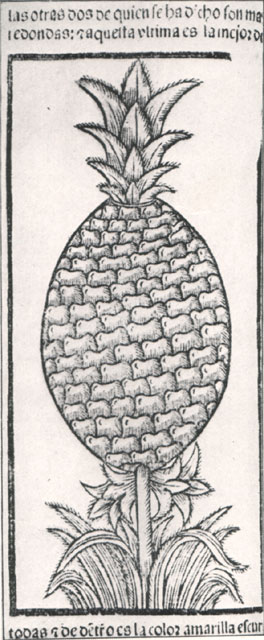
The first illustration of a pineapple in the New World appeared in 1535 in the 19-volume La Historia general de las Indias by Gonzalo Fernández de Oviedo y Valdés.
“Gonzalo Oviedo sailed in 1514 on the first of his many journeys to America, where he compiled detailed descriptions and woodcut illustrations of products and goods found in the New World. The Spaniard introduced Europe to an enormous variety of previously unheard of ‘exotica,’ including the pineapple, the canoe, smoking tobacco, the manatee, and the hammock. Along with Pedro Mértir de Anglería and Bartolomé de Las Casas, Oviedo was one of the first European ‘chroniclers of the Indies’ having written two comprehensive works on America, including the rare Historia.”